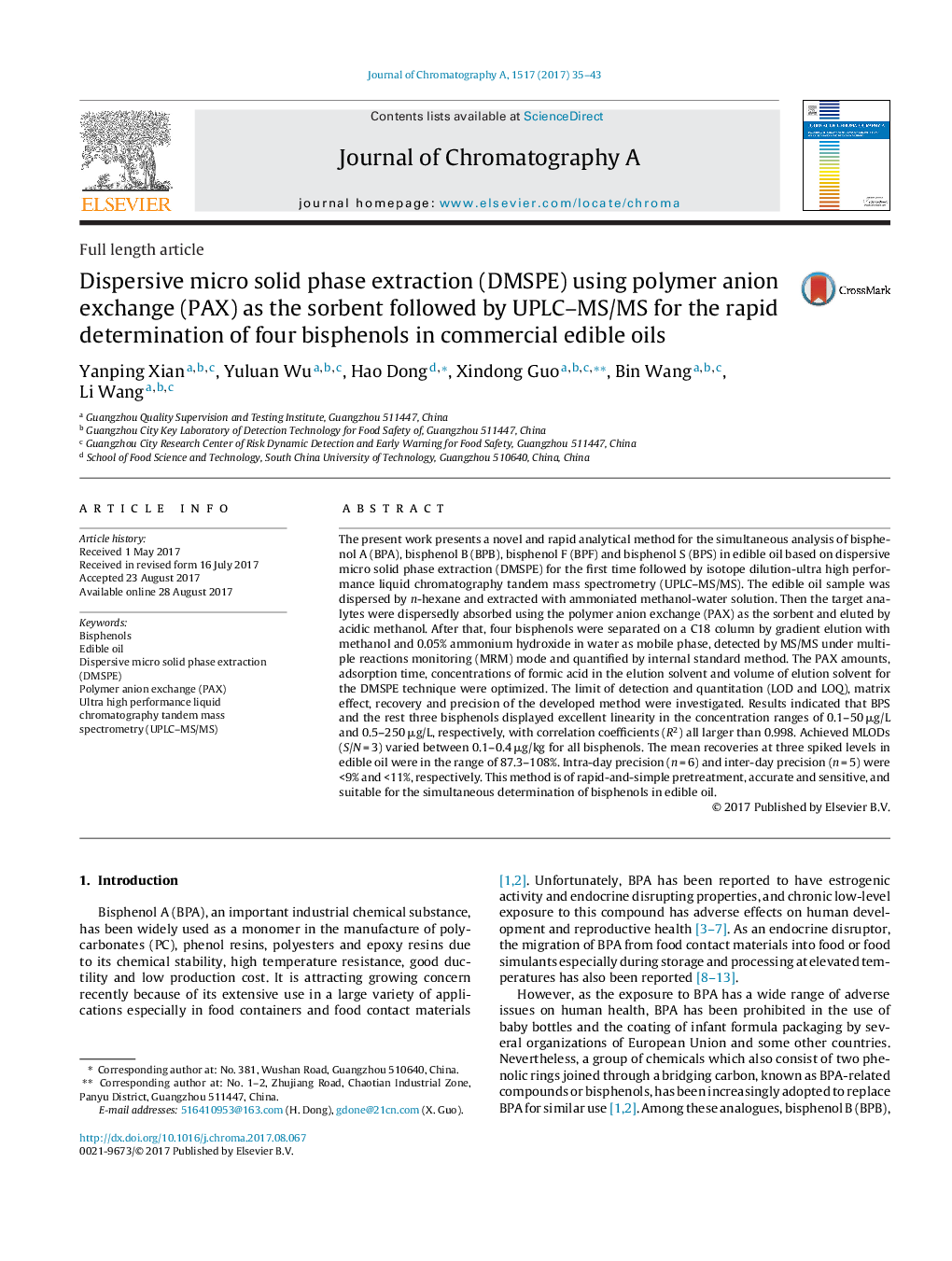| Article ID | Journal | Published Year | Pages | File Type |
|---|---|---|---|---|
| 5134931 | Journal of Chromatography A | 2017 | 9 Pages |
â¢Polymer anion exchange (PAX) was first used as a sorbent in DMSPE.â¢The newly developed DMSPE method is rapid, economical, convenient and sensitive.â¢DMSPE was observed to be superior to SPE in matrix effect.â¢UPLC-MS/MS was adopted in the analysis for 4 bisphenols in oil.â¢Method with wonderful linearity and precision was easy to implement.
The present work presents a novel and rapid analytical method for the simultaneous analysis of bisphenol A (BPA), bisphenol B (BPB), bisphenol F (BPF) and bisphenol S (BPS) in edible oil based on dispersive micro solid phase extraction (DMSPE) for the first time followed by isotope dilution-ultra high performance liquid chromatography tandem mass spectrometry (UPLC-MS/MS). The edible oil sample was dispersed by n-hexane and extracted with ammoniated methanol-water solution. Then the target analytes were dispersedly absorbed using the polymer anion exchange (PAX) as the sorbent and eluted by acidic methanol. After that, four bisphenols were separated on a C18 column by gradient elution with methanol and 0.05% ammonium hydroxide in water as mobile phase, detected by MS/MS under multiple reactions monitoring (MRM) mode and quantified by internal standard method. The PAX amounts, adsorption time, concentrations of formic acid in the elution solvent and volume of elution solvent for the DMSPE technique were optimized. The limit of detection and quantitation (LOD and LOQ), matrix effect, recovery and precision of the developed method were investigated. Results indicated that BPS and the rest three bisphenols displayed excellent linearity in the concentration ranges of 0.1-50 μg/L and 0.5-250 μg/L, respectively, with correlation coefficients (R2) all larger than 0.998. Achieved MLODs (S/N = 3) varied between 0.1-0.4 μg/kg for all bisphenols. The mean recoveries at three spiked levels in edible oil were in the range of 87.3-108%. Intra-day precision (n = 6) and inter-day precision (n = 5) were <9% and <11%, respectively. This method is of rapid-and-simple pretreatment, accurate and sensitive, and suitable for the simultaneous determination of bisphenols in edible oil.
